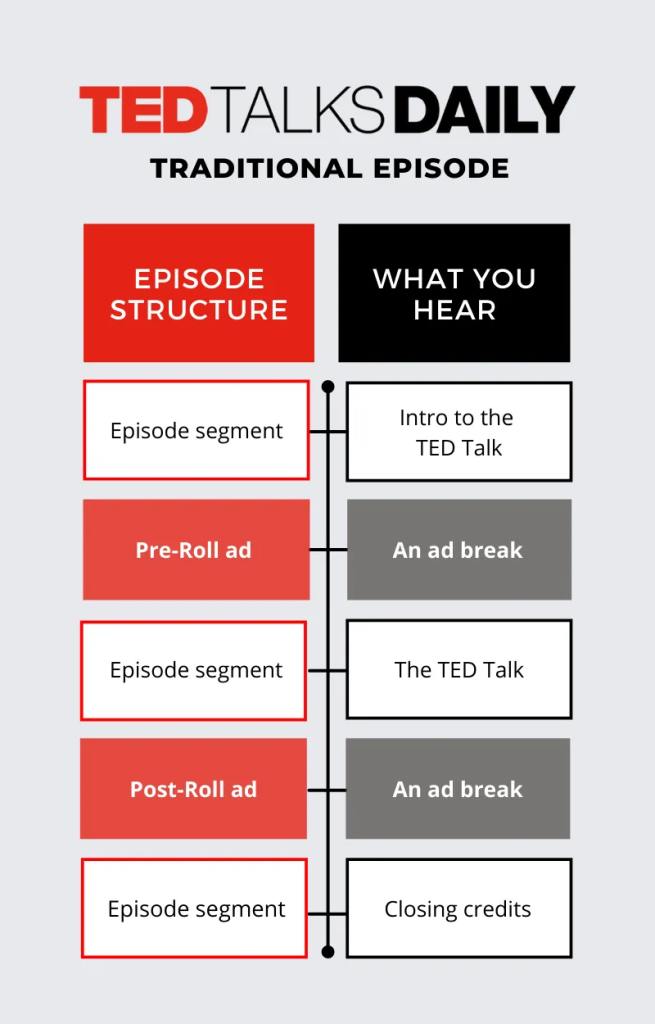The popularity of podcasts is on the rise, with 68 million weekly listeners in the United States alone, and it is expected to increase to 109 million in 2022. Listeners are highly engaged and receptive to the hosts’ messages, making them a valuable audience. It is no surprise that brands are taking advantage of this trend, with podcast advertising generating $842 million in revenue in 2020, a 19% increase from the previous year. According to IAB, the podcasting ad revenue is expected to exceed $2 billion by 2023.
If you are a podcaster or a podcast platform, this is an opportune time to benefit from the growing industry. For podcast hosts, this article provides insights into monetizing with podcast ads, while for podcast hosting platforms, we outline how you can offer your podcasters powerful ad serving features.
Podcast advertisements are audio promotions that are featured within a podcast. There are various forms of podcast ads, including:
- Host-read ads: These are pre-recorded or spoken live by the podcast host before, during, or after the podcast.
- Direct-sold audio ads: These are when the podcast host collaborates with an advertiser to insert a pre-recorded ad into the podcast, either manually or through dynamic insertion at download time.
- Programmatic ads: These audio ads are dynamically inserted through an ad network. TThere is no direct relationship with the podcaster
- Sponsored/branded podcasts: Brands create or sponsor a podcast to promote themselves (self-promotion).
Several podcasting platforms offer built-in advertising capabilities, including:
Spotify – As the leading podcast platform with almost 44 million monthly listeners, Spotify enables podcasters to include ads through “streaming ad insertion” via a network or direct-sold. In Q2 of a recent year, they experienced a 625% YoY increase in ad revenue.
PRX – Through their in-house ad platform, Dovetail, PRX allows podcasters to incorporate ads into episodes through dynamic ad insertion. This enables them to integrate sponsorship messages in a more seamless manner, with targeting options available based on episode name and number, context, and more.
iHeartRadio – With a strong podcast platform that has 150 million downloads each month, iHeartRadio launched the iHeartPodcast AdSuite in 2020. This provides hosts with the ability to monetize over 750 original podcasts by including ads in them.

The Benefits of Podcast Ads Monetization
Podcast ads are a way for podcasters to monetize their content and keep their shows free for listeners. By providing valuable content, podcasters deserve to be compensated, and monetizing their shows makes it possible for them to continue producing quality episodes.
Not only are podcast ads beneficial for podcasters, but they are also an essential revenue stream for podcasting platforms. By creating a strong ad product, podcasting platforms enable podcasters to monetize their shows more effectively.
Advertisers are big fans of podcast ads too. With a 71% conversion rate, podcast ads are more effective than traditional display ads, leading advertisers to pay a premium for them. Podcasters who insert multiple ads per episode can generate $100+ CPMs, with an industry average of $18 CPMs for a 30-second ad, and $25 for 60 seconds. You can estimate your own CPMs with a tool.

How podcast advertising differs from traditional display advertising
Podcast advertising offers limited targeting compared to traditional display advertising. As a podcasting platform, it’s important to understand what features you can offer advertisers and podcasters such as:
Location-Based Targeting – This uses the IP address to target ads based on the listener’s location. Podcast Name/Episode Number – Advertisers can target specific podcasts and even episode numbers.Podcast Category – You can target podcast genres, for example, “Sports-related” podcasts can be targeted by Nike. Episode Content – Advertisers can target specific keywords from a transcript of an episode. If the keywords are mentioned in the transcript, then the advertiser’s ads can appear. Day/Hour Targeting – This enables targeting by time of day and/or day of the week. You could offer, for example, McDonald’s the chance to promote their coffee to anyone downloading a podcast on a weekday morning.
Third-Party Data Targeting – This is primarily based on IP Address and includes targeting by weather or company. Using a Weather API such as OpenWeatherMap, you could request the weather around that user, then allow advertisers to target people in specific weather conditions. Using a company API like Clearbit, you could identify where the user works, such as Microsoft, then allow advertisers to target specific industries and companies.
How to get started with podcast ad monetization quickly
However, if you operate a podcasting platform, you may be considering creating an ad server internally or scaling up your current one. It is essential to be aware that developing an ad server from the ground up can be both expensive and time-consuming. An alternative is to use AdWheel self ad platform to run podcast ad via VAST and VPAID tags, which enables you to create the perfect podcast ad server within weeks. If you are interested, feel free to contact to obtain more information
